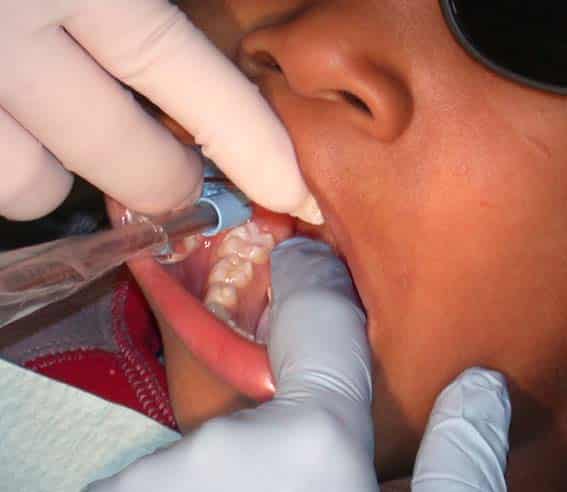Children and teenagers are most susceptible to developing cavities. Brushing and flossing properly and regular sessions with the dentist can certainly contribute to good oral hygiene routines. Typically, just brushing can help remove food particles and plaque that linger on the smooth surfaces of teeth, but it does not get into the deep grooves and nicks that are inherent of every chewing surface.
Dental sealants are thin, liquid plastic coating applied on the chewing surfaces of teeth, most commonly the back teeth or premolar and molars. The sealant is designed to quickly dry and form a hard shield over the surface to block access to the fissures and depression from bacteria and subsequently prevent cavities and tooth decay.
How can sealants benefit your child’s teeth?
Dental sealants can protect the tooth surface and significantly decrease the risk of decay for several years as long as they remain intact. The protection may reduce or lost when part or the entire bond is broken, but clinical studies have shown that teeth that lost sealants are no more susceptible to decay.
Developing fissure decay begins at much early years of life. The children and teenagers are the obvious candidates and one must be ready to live by other key ingredients in preventing tooth decay and maintaining good oral hygiene by:
- Brushing with fluoride toothpaste and flossing twice a day can help in keeping the teeth surfaces clean.
- Consuming nutritional well -balanced diet and healthy snacks help retain the integrity of teeth as well as nutritionally promote bone growth in the mouth.
- Seeing the dentist regularly can help monitor the growth of teeth properly.
Sealants act as a blockade and protect these vulnerable areas by sealing out food and plaque. Besides, dental treatments like root canal and cosmetic overhauls like implants and bridges can be expensive for milk teeth that will fall out anyway. Sealants are a cost effective alternative.
To learn further about Dental Seltans watch this Video
How are sealants applied?
Dental sealants are easily applied and take only a few minutes to seal each tooth. The dentist thoroughly cleans the teeth that will be sealed with the help a dental drill to open the grooves and determine if decay is present. The chewing surfaces are then roughened with an acid solution to help the sealant sticks to the teeth and then painted on the tooth. Once it bonds directly to the tooth and hardens, your child is required to avoid chomping on ice or chewing hard or sticky foods that could dislodge the sealant. The treatment is a quick and painless process.
Consult with your dental care professional for the best course of action in this matter. Your child might need other treatments that could be hampering their dental condition, in which case sealants would just complicate things. They’re a protective non permeable layer that keeps out bacteria, so you must ensure that the tooth is bacteria free and safe from other defects before applying the treatment.
Find more information on Pediatric Preventive Dental Care Here.







